Here is something anomalous . . . a rear-wheel-drive performance sedan that isn’t a luxury-badged (or priced) sedan.
One that’s also more practical than other mid-sized sedans.
Because it’s a hatchback’d sedan.
It is the Kia Stinger – and there aren’t many left that are like it.
What It Is
The Stinger is Kia’s interesting attempt to resurrect what was once common – the rear-drive layout in an affordably priced mid-sized sedan. The only other one you can still buy (new) for well under $40k is the Dodge Charger – and probably not for long, because of the regulatory pressure being applied to de facto illegalize affordable rear-drive cars, period.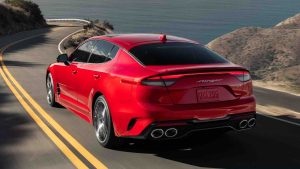
The Stinger is also a hatchback, making it more practical than a sedan with a trunk like the Charger. It – the Kia – has 23.3 cubic feet of space behind the back seats and if you fold those back seats down, you have an almost flat load floor long enough to accommodate an 80-inch long casement window sash (more on that follows below).
It also offers a V6 – another thing that’s becoming hard to find, even in luxury-badged (and priced) mid-size sedans that cost a lot more than $40k. Here, you can find and buy one for substantially less than what it’d cost you to buy a four cylinder-powered rear-drive luxury-badged sedan such as a BMW 5 Series or Mercedes E-Class.
Prices start at $36,290 for the rear-drive GT Line, which comes with a 300 horsepower 2.5 liter turbocharged four cylinder engine and an eight speed automatic. You can get this one with AWD, if you like, too.
So equipped, the MSRP is $38,490.
The GT1 trim adds high-performance Brembo brakes, a limited slip differential, 19-inch wheels and a sunroof, among other upgrades. It comes with the same 300 horsepower engine and in either rear drive ($43,890) or AWD ($46,090) versions.
A top-of-the-line GT2 comes standard with a 3.3 liter 368 horsepower V6 engine, which you can get paired with either rear-drive ($51,490) or AWD ($53,690) which is also unusual because it’s usually the case these days that AWD is a mandatory standard with the top-of-the-line (and most powerful engine) in luxury-badged (and priced) sedans. 
Also unusual is that this version of the Stinger costs less than the four cylinder-powered versions of luxury-badged sport sedans such as the BMW 5 Series – which stickers for $54,200 to start and for that sum comes standard with a measly-for-the-money 2.0 liter, 248 horsepower engine. A Honda Accord with its optional turbo four has more horsepower.
Similarly, the Mercedes E350 – which stickers for $54,950 to start – comes standard with a 2.0 liter, 255 horsepower four cylinder engine.
Shrinkflation as applied to transportation.
Mercedes also offers the sleeker CLS – which is more visually in line with the Stinger and comes standard with a more appropriate 362 horsepower in-line six (and AWD). It also comes standard with a $72,950 MSRP – and a tiny trunk with just 11.9 cubic feet of storage capacity.
This leaves the Dodge Charger – which is the only other non-luxury-badged sedan that’s rear-drive (AWD optional) and priced comparably. It stickers for $32,500 – significantly less than Kia asks for the base Stinger – and it comes standard with a V6 (though it’s not as strong as the Stinger’s turbo’d four). It is also a slightly bigger car and it has a lot more backseat legroom. But it also has a smaller trunk – and a different look.
More on that follows below.
In addition to a mild styling refresh, both of the Stinger’s available engines are more powerful – especially the standard 2.5 liter four, which gets a 45 horsepower bump (to 300) vs. 255 last year. The optional V6 gains 3 horsepower vs. previously.
A Scorpion Edition package ($1,295) has also been added to the roster of options for the GT2. It features unique-to-this-trim black-anodized 19 inch wheels, rear spoiler, dark exhaust tips and carbon fiber interior trim.
What’s Good
It has a pulse.
It’s actually practical.
It’s also affordable.
What’s Not So Good
Significantly less back seat legroom vs. Charger.
V6-equipped version costs about $10k more than V8-equipped version of the Charger.
Driver/passenger-side door pulls have a tendency to pull out when pulled.
It is not horsepower that makes the Stinger so unusual – although it has more than the usual.
Even the standard engine makes more horsepower – by far – than the optional engines available in non-luxury-badged mid-sized sedans such as the Honda Accord and Mazda6 (soon to be retired). Out of just 2.5 liters, 300 horses – which is just barely shy of the horses summoned by the Toyota Camry’s optional 3.5 liter V6, which makes 301.
Ditto the Nissan Maxima. It comes standard with a V6, but only 300 horses – also out of 3.5 liters.
But that’s not the truly unusual thing about this Kia. What is exceptionally unusual is that this mid-sized sedan isn’t front-wheel-driven. Like practically every other mid-sized sedan you can still buy for less than $40k – with the sole exception of the Dodge Charger, which lingers into the twilight on borrowed time – from an earlier time. 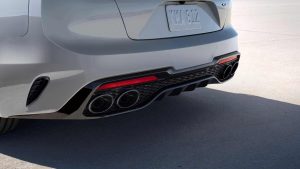
Why the big deal?
Well, because front-drive is, fundamentally, an economy-car layout. It eliminates the rear axle (fewer parts) and combines the transmission and front axle into a single unit called the transaxle. The package is mounted sideways rather than front to back. It occupies less space and is easier to install as the car goes down the assembly line. All good, insofar as reducing cost (and weight) and (usually) improving . . . economy.
Not so good for balance and handling – considerations that are less primary in an . . . economy car.
It was once the case – in an earlier time – that most cars a notch up the food chain from that were rear-wheel-drive. Most also came with at least a six cylinder engine and many came standard with V8s.
Then along came the government – and its “mandates” – and almost all cars – excepting high dollar ones, which could afford to be “noncompliant” – were converted over to economy car-type layouts, because it helped the car companies comply with the “mandates” issued by government. Or rather, by unelected government bureaucrats, the impossible-to-vote-out-of-office people who have acquired the power to decree how much gas the car you buy is allowed to use, among other things.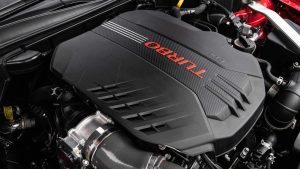
That is why there are now just two rear-drive, mid-sized sedans you can still buy for less than $40k.
One of them being this Kia.
If you’d like more than 300 horses driving the rear wheels, Kia offers the option of a V6 – which is fast becoming another unavailable option in other mid-sized sedans without a luxury-badge and the price tag to go with it. You can’t get one at all in the Honda Accord anymore. The Mazda6 soon won’t be available at all, anymore. The Hyundai Sonata is four cylinder-only (and also front-wheel-drive-only). Ditto the Nissan Altima, the Maxima’s roughly same-sized but less expensive sibling.
But here, an oasis of performance – at a much more accessible price.
The Kia’s optional 3.3 liter V6 makes 368 horsepower – a virtual dead-heat, power-wise, with the Dodge Charger’s optional 5.7 liter Hemi V8, which gins up 370 horses. 
Opting for the V6-powered Stinger will set you back more than springing for the Dodge’s Charger’s optional V8. But you can get it with either the rear-drive layout or all-wheel-drive, which Dodge doesn’t offer with the V8. The Charger R/T is rear-drive only.
You’ll also be able to get to 60 MPH in 4.8 seconds, markedly quicker than the V8-powered (but several hundred pounds heavier) Dodge, which needs about 5.2 seconds to make the run. This, by the way, is about the same as the V6 Camry’s time.
But perhaps the most unusual thing about the Kia is how much power comes standard vs. what you get in luxury-badged mid-size sedans such as the Benz E and the BMW 5. These are still very nice cars but it is insulting that for $54k-plus in each case all you get is a 2.0 liter four and no more than 255 hp (in the Benz; the BMW’s four is weaker). Viewed from another angle, for several thousand dollars less than Benz and BMW charge for their embarrassingly under-engined luxury-sport cars you could get the V6 Stinger and 110-plus horsepower more than either of them.
Both of the Kia’s engines are paired with an eight speed automatic transmission that has the now-usual driver-selectable modes, which tailor throttle response and shift points to suit different driving preferences and situations.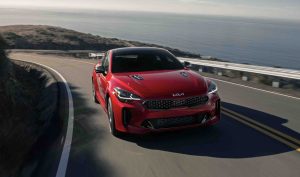
On The Road
It’s a shame that the fun of driving a better-balanced/better-handling rear-drive sedan is increasingly something denied to people of less than flush means.
Kia aims to correct that.
Together with Dodge, the two together – even though rivals – are like the Galactica and the Pegasus in the old Battlestar Galactica series, teaming up to counter the evil Cylons and their numerically superior base ships.
But Kia approaches the problem of battling the Cylons differently, with a different take on the same grand idea. The Dodge Charger is a heavy (4,200-plus pounds) car that needs at least a V6 to keep up with four cylinder powered sedans of about the same size. It is much more itself with a V8. The Kia, being lighter, is fine with the four – and even finer with a four that makes more power than the heavier Dodge’s V6.
With its optional 3.3 liter turbo’d V6, the Stinger does just that. It stings cars like the four cylinder-powered BMW 5 and Benz E.
Smoke ’em if you’ve got ’em.
But – again – power isn’t the definitive quality here. It is balance. With the weight of its drivetrain (engine, transmission, axle) spread out from up front to out back, the Stinger is more of that than the typically nose-heavy/tail-light FWD car, even when AWD is added – because even then, most of the power, most of the time, is going to the front rather the rear wheels. When most of the engine’s power is applied to the front wheels, it biases weight transfer toward the front wheels.
AWD helps correct for this built-in disadvantage (as far as handling balance goes) but it’s fundamentally reactive and corrective.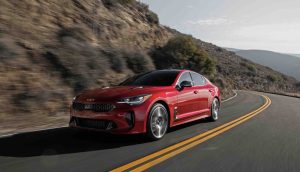
Front-drive cars also tend to be over-steerers in the curves while with rear-drive cars, it’s generally the opposite.
Plus, you can power oversteer through the curves, a delight now largely denied the non-affluent driving enthusiast.
These are qualities better experienced than described.
And now you have more than just one way to experience them.
At The Curb
Although the Stinger has much in common with the Charger in terms of the basic layout – and concept – it is a very different-looking (and in one key respect) functioning ride.
It is, first of all, a slightly smaller – and considerably narrower – car than the Charger. It is much lower (by nearly three inches) and sleeker, too. This results in a lot of style and (surprisingly) about the same amount of headroom in both rows. The Charger has 38.6 inches up front; the Stinger has 38.3 inches. In back – where you’d expect the Charger to have the lead in terms of headroom-space on account of its more formal roofline – it turns out the Stinger has slightly more: 37 inches vs. 36.6 for the Dodge.
The Charger does have more shoulder room – being wider – and a class-best 40.1 inches of backseat legroom vs. 36.4 in the Kia. In that respect, the Charger is the more practical car, because it has literally as much room in the back as it does up front and so is an extremely spacious car, for 4-5 adult passengers. It is also easier to get in – and out – if you have bad knees – because it’s not as low to the ground. These are among the reasons why the Charger has been a perennial hot-seller, even though the current model is essentially the same car that Dodge was selling 11 years ago.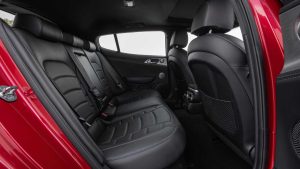
The other reasons being the rear-drive layout, standard V6 and available V8.
On the other hand, the Kia is more practical in another way – because of the stuff it can carry. Like the 80-inches long window sash I needed to get to the glass shop. A Charger couldn’t have taken it there, because its trunk would never accommodate an 80×20 anything – at least, not without some of that hanging outside the open trunk. The Charger is a nice big car with a 16.5 cubic foot trunk. It’s a decent sized trunk. But it’s also limited by its shape and the smallness of the opening/trunk lid.
The Stinger has a wide-opening hatchback. It also has 23.3 cubic feet of space, which is not only a lot more than the Charger has, it’s usefully more – because of the wide-opening hatchback. It was easy to lay the 80-inch-long window sash on the floor, once the back seats were folded forward – and get to the glass shop with the hatch closed.
The Rest
One of the reasons the Stinger’s not as expensive may be on account of its not being fitted with as much electronica. It has an analog main gauge cluster, for instance – and physical (rotary knob/button) controls for the AC and stereo. Interestingly – ironically – these are apt to be less expensive as time passes, because they are less apt to fritz out than tap-swipe LCD-type interfaces. 
The only fault I could find with this car were the driver and front seat passenger door pulls – both of which partially pulled out (the upper sections) when pulled on. It may have just been the test car they sent me, which – like all test cars – gets run hard and put up wet by one car test-driver after another.
Kia is aware of this and will take care of it.
The Bottom Line
This Stinger is a zinger. And so is Kia for bucking trends.
. . .
Got a question about cars, bikes or anything else? Click on the “ask Eric” link and send ’em in! Or email me directly at [email protected] if the @!** “ask Eric” button doesn’t work!
If you like what you’ve found here please consider supporting EPautos.
We depend on you to keep the wheels turning!
Our donate button is here.
If you prefer not to use PayPal, our mailing address is:
EPautos
721 Hummingbird Lane SE
Copper Hill, VA 24079
PS: Get an EPautos magnet or sticker or coaster in return for a $20 or more one-time donation or a $10 or more monthly recurring donation. (Please be sure to tell us you want a magnet or sticker or coaster – and also, provide an address, so we know where to mail the thing!)
My eBook about car buying (new and used) is also available for your favorite price – free! Click here. If that fails, email me at [email protected] and I will send you a copy directly!




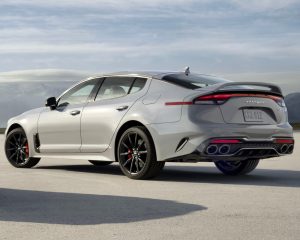
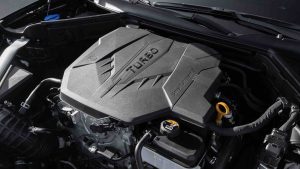








I bought my wife a barely used 2018 Genesis G80 back in 2020 that has 3.3 twin turbo from this car. It’s an amazingly powerful sedan and has tons of luxury features. I’ve never driven a car with doors that weigh as much as that car, and you can appreciate that weight and the two-pane glass when you’re driving. The car is so quiet. Not many people know what kind of car it is since it’s so rare.
The best part is I got it not 2 years old with 19k miles for $37k and it stickered about $58k. It brings me grins every time she lets me drive it.
This is an interesting car – most of the British car press slagged it off when it launched here, for stuff like not having as nice plastic, or the colours on the screen aren’t as good as its competitors…. But car people seem to love it – how do you know – the bastard things dont depreciate (especially the V6 ones)!!! I’ve been waiting ages to pick one up cheap – infact after a couple years of depreciation, this is worth practically the same as a German “luxury” sedan of similar age!
I had a chrysler 300 (Dodge Charger) with AWD and the V8. I loved it. The power bias is 30/70 so it feels like a rwd car. It would let you throw out the rear end but pulled you back just in time. What fun! My only complaint was the rear overhang was too short so it looked awkward and the trunk was smaller than expected for a large car.
Hi Anon,
I am also a big fan of these cars – the Charger and its Chrysler 300 cousin. It will be sad to see them go, along with their V8s. Another casualty of the war upon combustion.
Also a big fan of the charger/300, had one and loved it, V8 RWD-only. I think they lost a percentage of sales when they discontinued the AWD avail. with the V8.
Sounds like a good option. I just had a look and the only ones available within 75 miles of me are the GT2 (loaded with turbo V6) which are over 50k – non starter.
sounds like a winner – but for how long?
kia needs to get that price point under control so long as the charger survives, and to be a monetary alternative to the EVs.
that is something that automakers who want to keep making cars instead of golf carts (if there are any) need to keep in mind – make the EVs the expensive option. if they can keep market share, the scheme is more likely to fall apart.
I would have bought this car if it was out at the time I got an ATS RWD. And then I wanted something a little bigger and looked at this car or a 300 RWD-V8, and the 300 won only cause I could get one in RWD-only where the local Kia dealer only had AWD units and would not get me a RWD-only. The Chrysler/dodge dealer only had AWD too but ordered me a RWD-only, came in 6 weeks.
And I searched high and wide for the kia in RWD-only and they were only avail way south and probably why the local dealer couldn’t/wouldn’t get me one.